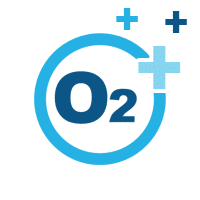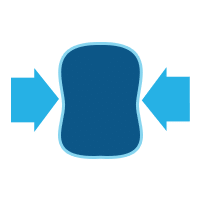Brain Damage
Brain damage is an injury that causes the deterioration or destruction of brain cells. Brain damage includes both Traumatic Brain Injury (TBI), caused by an external force, and Acquired Brain Injury (ABI), occurring at the cellular level. The severity of damage can vary based on they type of injury, but can range from headaches, confusion, and memory problems, to more severe cognitive, behavioral, and physical disabilities.
Benefits of Hyperbaric Oxygen Therapy for Brain Damage:

Increases Amount of Oxygen in the Blood
Stimulates development of new blood vessels from pre-existing vessels as well as the natural development of new blood vessels.

Reduces Inflammation & Swelling
Suppresses the cellular activity of the immune system which triggers swelling when an injury or damage to the body occurs. While this reaction is meant to start healing and protect from injury it can result in secondary injury, pain, and prolonged recovery time.

Preserves, Repairs, & Enhances Cellular Functions
Boosts cellular metabolism, promotes rapid cell reproduction, and enhances collagen synthesis. Collagen is a protein in connective tissues like skin.
Key Research on Hyperbaric Oxygen Therapy for Brain Damage
Recent News on Hyperbaric Oxygen Therapy for Brain Damage
Arizona Legislature Approves Hyperbaric Oxygenation Treatment for Veterans with Traumatic Brain Injury
TUCSON, Ariz., April 02, 2018 (GLOBE NEWSWIRE) -- Veterans with traumatic brain injuries (TBI) and selected post-traumatic stress disorder (PTSD) conditions would be eligible to participate in hyperbaric oxygenation therapy (HBOT) under a bill approved unanimously in...
Could hyperbaric treatment heal the brain?
Each year, thousands of Americans suffer a traumatic brain injury. In 2013, about 2.8 million TBI-related emergency department visits, hospitalizations and deaths occurred in the United States, according to the Centers for Disease Control and Prevention. Most of these...
HBOT Linked to Significant Reduction in PTSD Symptoms
Hyperbaric oxygen therapy (HBOT) demonstrated a significant drop in post-traumatic stress disorder (PTSD) symptoms and suicidal ideation in a new study of military personnel, according to a study published in Medical Gas Research. Researchers enrolled 29 active-duty...
Related Indications
Schedule a Consultation
Additional Research
Preconditioning provides neuroprotection in models of CNS disease: paradigms and clinical significance.
Abstract: Preconditioning is a phenomenon in which brief episodes of a sublethal insult induce robust protection against subsequent lethal injuries. Preconditioning has been observed in multiple organisms and can occur in the brain as well as other tissues. Extensive...
The effect of hyperbaric oxygen on symptoms after mild traumatic brain injury.
In this single-center, double-blind, randomized, sham-controlled, prospective trial at the U.S. Air Force School of Aerospace Medicine, the effects of 2.4 atmospheres absolute (ATA) hyperbaric oxygen (HBO₂) on post-concussion symptoms in 50 military service members with at least one combat-related, mild traumatic brain injury were examined. Each subject received 30 sessions of either a sham compression (room air at 1.3 ATA) or HBO₂ treatments at 2.4 ATA over an 8-week period. Individual and total symptoms scores on Immediate Post-Concussion Assessment and Cognitive Testing (ImPACT®) and composite scores on Post-traumatic Disorder Check List-Military Version (PCL-M) were measured just prior to intervention and 6 weeks after completion of intervention. Difference testing of post-intervention means between the sham-control and HBO₂ group revealed no significant differences on the PCL-M composite score (t=-0.205, p=0.84) or on the ImPACT total score (t=-0.943, p=0.35), demonstrating no significant effect for HBO₂ at 2.4 ATA. PCL-M composite scores and ImPACT total scores for sham-control and HBO(2) groups revealed significant improvement over the course of the study for both the sham-control group (t=3.76, p=0.001) and the HBO₂ group (t=3.90, p=0.001), demonstrating no significant HBO₂ effect. Paired t-test results revealed 10 ImPACT scale scores in the sham-control group improved from pre- to post-testing, whereas two scale scores significantly improved in the HBO₂ group. One PCL-M measure improved from pre- to post-testing in both groups. This study showed that HBO₂ at 2.4 ATA pressure had no effect on post-concussive symptoms after mild TBI.
Mitochondria in traumatic brain injury and mitochondrial‐targeted multipotential therapeutic strategies
Abstract Traumatic brain injury (TBI) is a major health and socioeconomic problem throughout the world. It is a complicated pathological process that consists of primary insults and a secondary insult characterized by a set of biochemical cascades. The imbalance...
